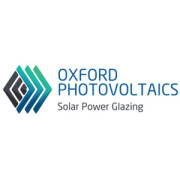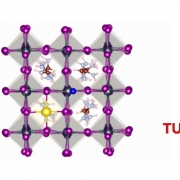Researchers achieve record efficiency of 11.4% for flexible CZTSSe thin-film solar cells
The Daegu Gyeongbuk Institute of Science and Technology (DGIST) in South Korea reported that the team led by Dr. Jin-Kyu Kang at DGIST’s Division of Energy achieved 11.4% for the photoelectric conversion efficiency of flexible CZTSSe thin-film solar cells, the highest in the world.
Flexible thin-film solar cells can be applied in various fields such as wearable, building, and automobiles based on the flexible substrate technology. Since CZTSSe thin-film solar cell uses low-cost, ecofriendly materials, it is drawing limelight and is being researched as the next generation solar power technology throughout the world. However, Flexible CZTSSe`s photoelectric conversion efficiency had not exceeded 10% due to technological issue such as the spread of impurities inside the flexible substrate and delamination.
In response, the DGIST research team conducted research and achieved the highest efficiency of 11.4%, which was officially recognized.
This achievement is drawing more attention because its mass production is much easier with the use of low-cost, ecofriendly materials such as copper(Cu), zinc(Zn), tin(Sn) than the existing thin-film solar cell (CIGS, CdTe, perovskite2), which uses high-cost heavy metal materials such as indium, lead, and cadmium.
One of the biggest achievements of this research is increased efficiency by changing the existing 3-stack structure of CZTSSe thin-film solar cell precursor into a multi-layered structure and by improving the voltage characteristics and uniformity.
This research was carried out as a project entitled “Development of earth abundant, non-toxic chalcogenide absorber based flexible inorganic thin film solar cell” with support by Korea Energy Technology Evaluation and Planning (KETEP), which is affiliated under the Ministry of Trade, Industry, and Energy.
DGIST plans to open the Research Center for Thin Film Solar Cell based on this achievement.
Dr. Kee-Jeong Yang who led the development of process technology said:
“Our research achievement has presented ways to secure the uniformity of large-area process, which can cause issues in commercialization. We will be able to advance the commercialization of next generation solar cell which is applicable in various fields such as building outer walls.”
Moreover, Senior Researcher Jin-Kyu Kang, the research project manager, said:
“As there is growing interest towards environment and resources are used unlimitedly these days, it is a very meaningful achievement that we have developed a thin-film solar cell using widely available, ecofriendly materials. We plan to lead the future solar cell technology using widely available materials and contribute to the development of thin-film solar cell industry.
Journal Reference
Flexible Cu2ZnSn(S,Se)4 solar cells with over 10% efficiency and methods of enlarging the cell area. Kee-Jeong Yang, Sammi Kim, Se-Yun Kim, Kwangseok Ahn, Dae-Ho Son, Seung-Hyun Kim, Sang-Ju Lee, Young-Ill Kim, Si-Nae Park, Shi-Joon Sung, Dae-Hwan Kim, Temujin Enkhbat, JunHo Kim, Chan-Wook Jeon & Jin-Kyu Kang. Nature Communications. Volume 10, Article number: 2959 (2019).
Source: News Release by Daegu Gyeongbuk Institute of Science and Technology (DGIST). Photo Credit: © DGIST. Dr. Jin-Kyu Kang in the Division of Energy Technology (middle) and the research team.










